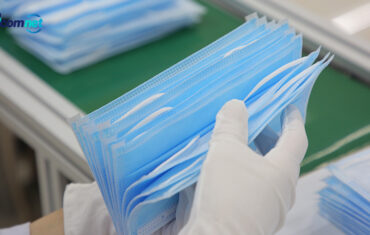Washing hands with soap and clean water for at least 20 seconds is the best way for children to get rid of germs, including COVID-19. If soap and water are not available, they can use hand sanitizers with at least 60% alcohol. However, swallowing just a tiny amount of hand sanitizer can cause alcohol poisoning in children. Many hand sanitizers are made with alcohol or rubbing alcohol (ethanol, ethyl alcohol, or isopropanol, isopropyl alcohol). Alcohol poisoning symptoms include sleepiness, low blood sugar, seizures and coma, and it can be fatal.
The American Academy of Pediatrics urges parents to keep bottle of sanitizer out of children’s reach. Don’t forget about travel-size bottles in purses, diaper bags, backpacks and cars. Parents and caregivers also should supervise children ages 5 and younger when they use hand sanitizer.
Hand sanitizer & COVID-19
As families began buying more hand sanitizer during the COVID-19 pandemic, the National Poison Data System started getting more reports of unintentional exposures in children. In the first half of 2020, there have been 46% more reported cases about hand sanitizer than during the same time last year. Many reports were about children ages 5 years and younger. Health experts recommend using these bottles that is 60% to 95% alcohol to kill the virus that causes COVID-19.
Check the label
The Food and Drug Administration (FDA) began letting companies that do not normally produce hand sanitizer make and sell it during the COVID-19 pandemic. When buying hand sanitizer, parents should make sure it has a label that lists the ingredients, warnings and precautions.
To reduce the risk of injury from children drinking hand sanitizers, producers should add ingredients to make them taste bitter. This important step helps prevent children from eating the product. To help make sure the sanitizer’s taste will not appeal to children, look for the word “denatured” on the bottle. You can also check for bitter ingredients such as denatonium benzoate (Bitrex); sucrose octaacetate; or butanol (also called tert-butyl alcohol).
Some products are made with isopropyl alcohol (isopropanol). Be especially careful with these sanitizers around children, since they can be more toxic than those made with ethanol or ethyl alcohol.
Disposing of recalled products
Do not flush or pour recalled hand sanitizer down the drain. These products should be disposed of in hazardous waste containers, if possible. If unsure, check with your local waste management and recycling center.
Remember
Call 911 right away if your child has collapsed, is having a seizure, is having a hard time breathing, or if they can’t wake up after using or swallowing hand sanitizer products.






